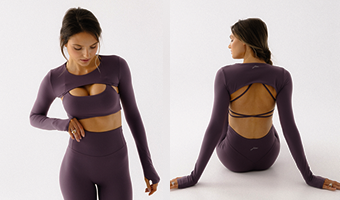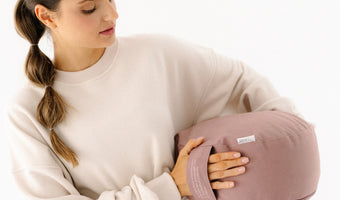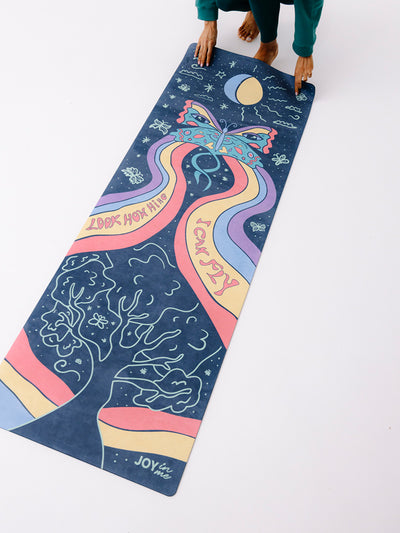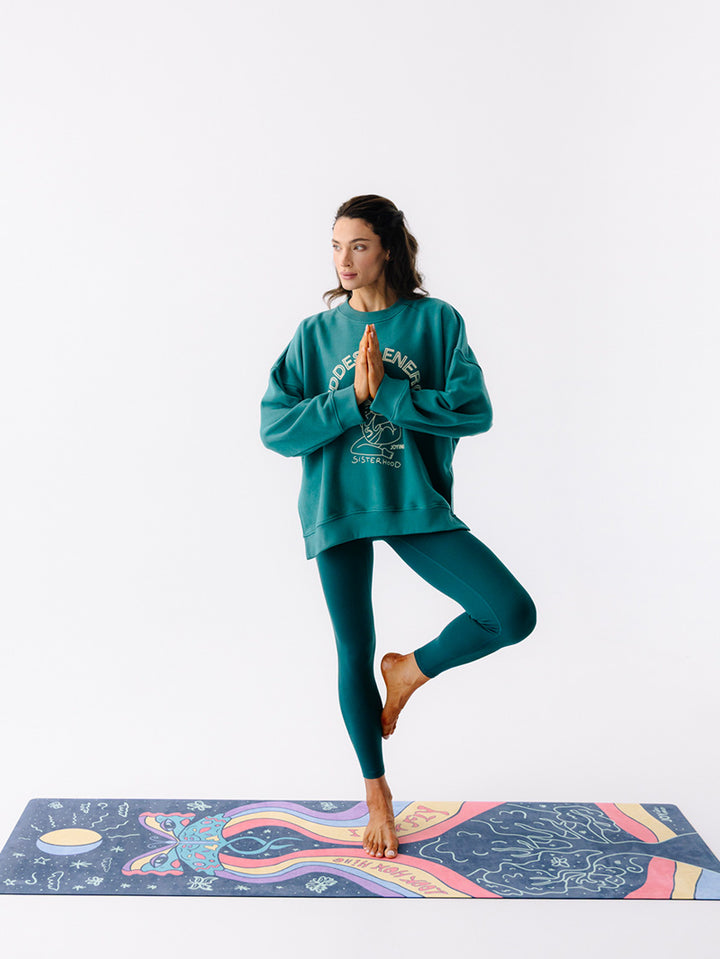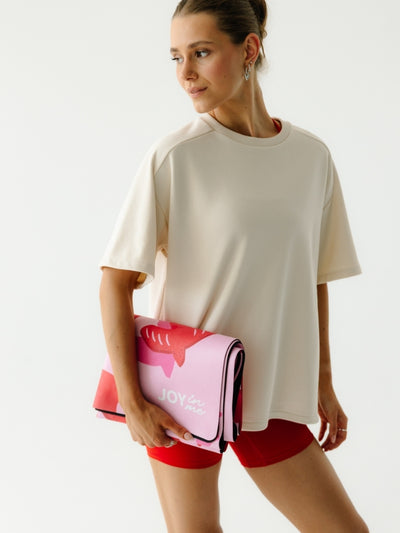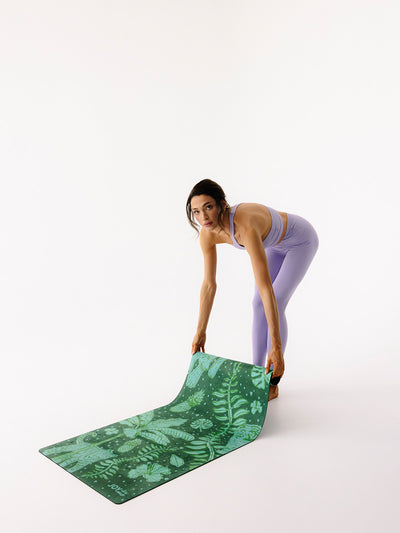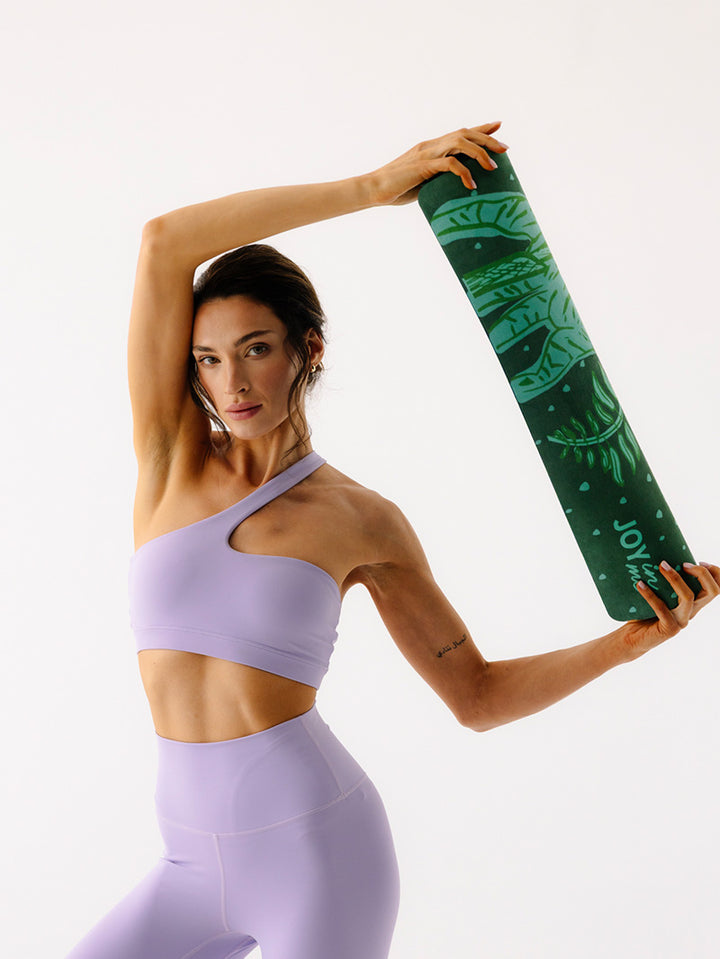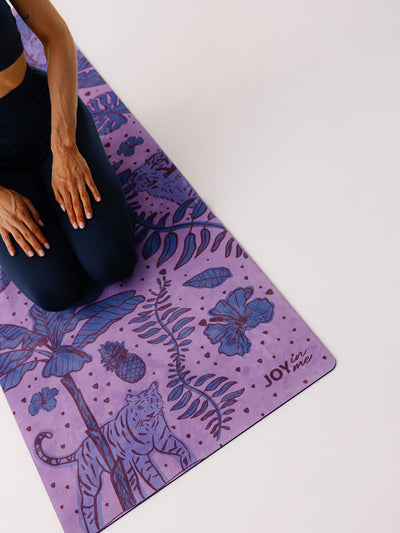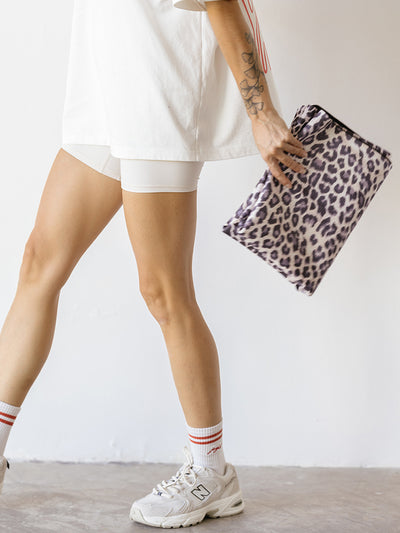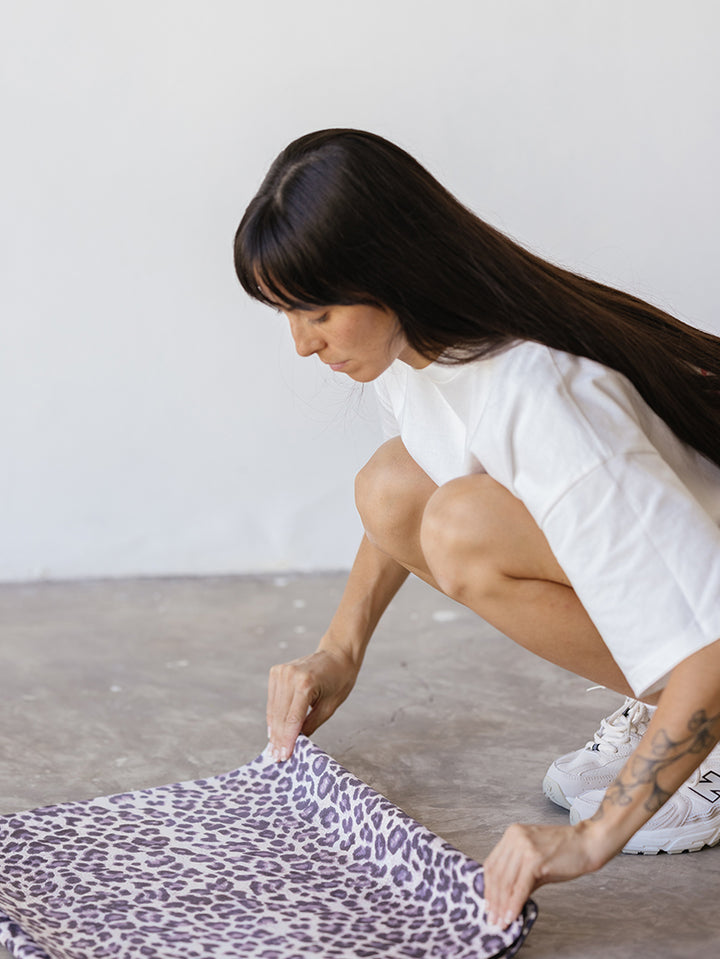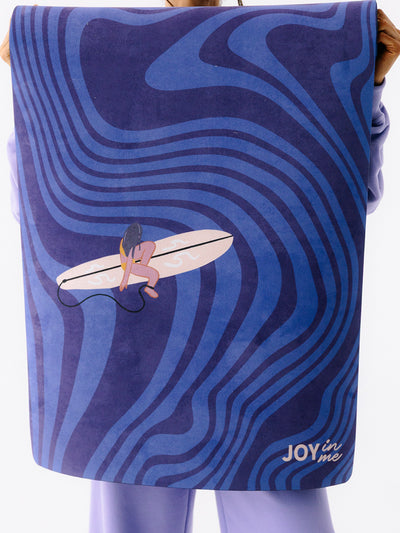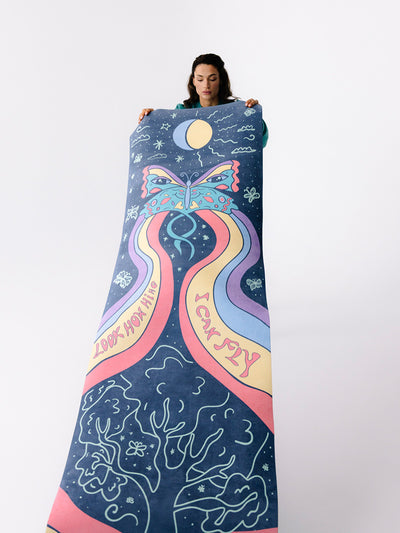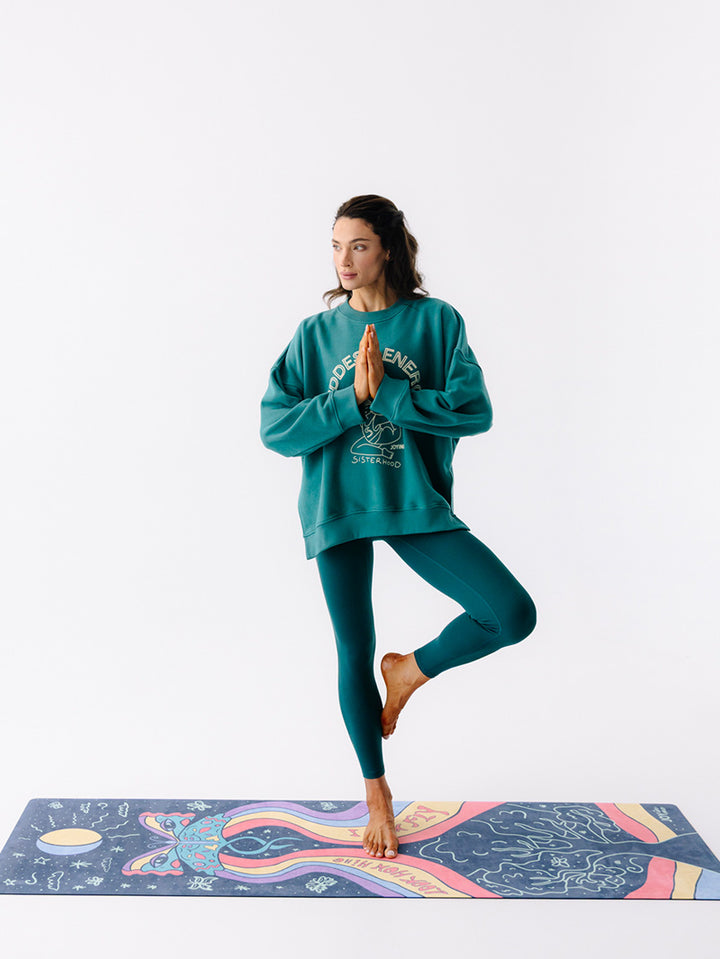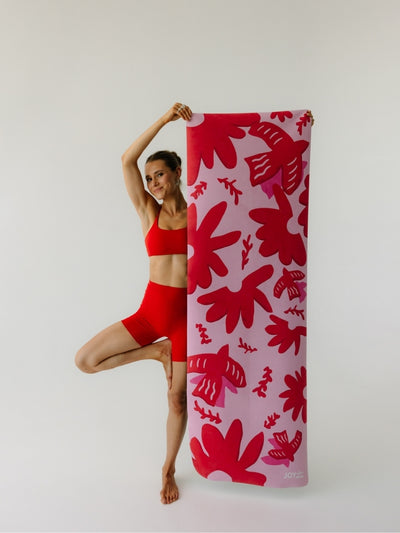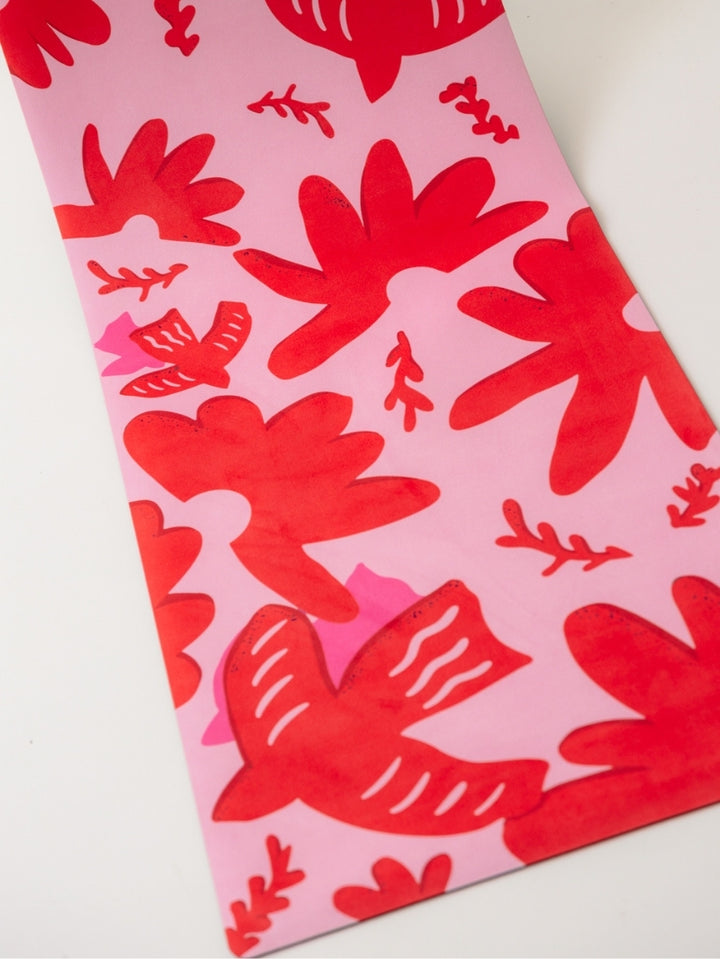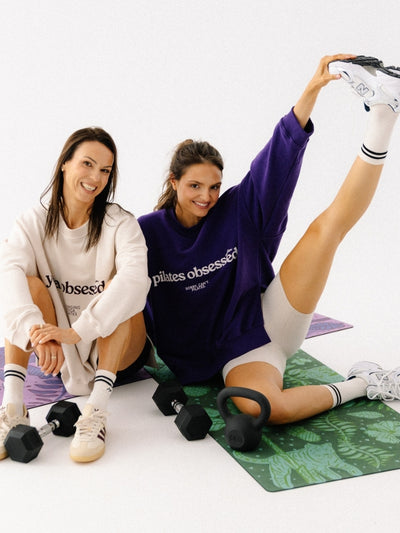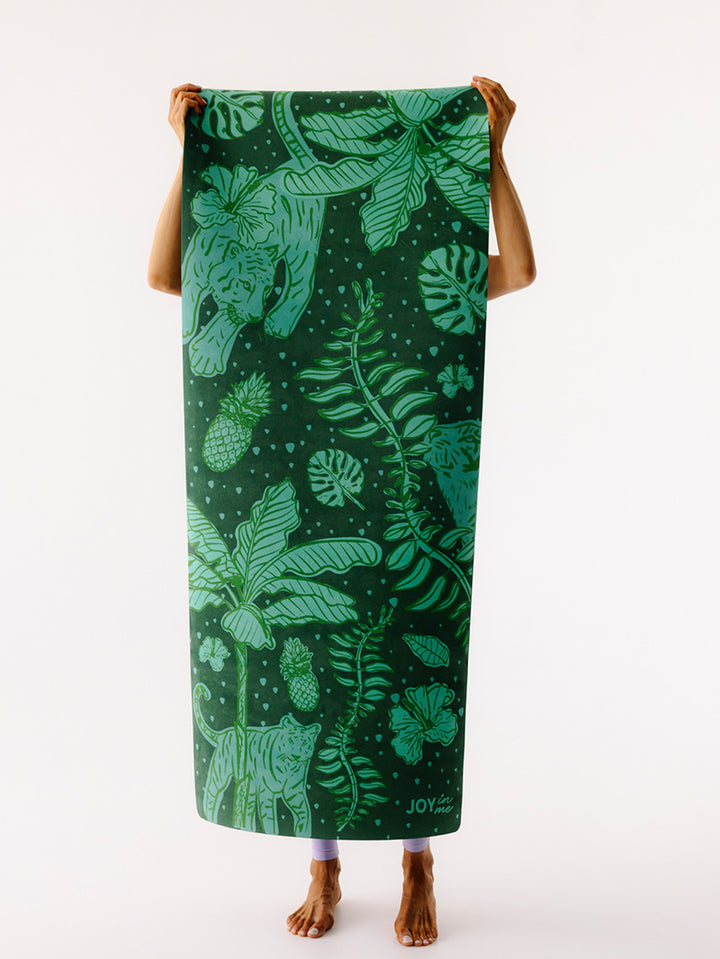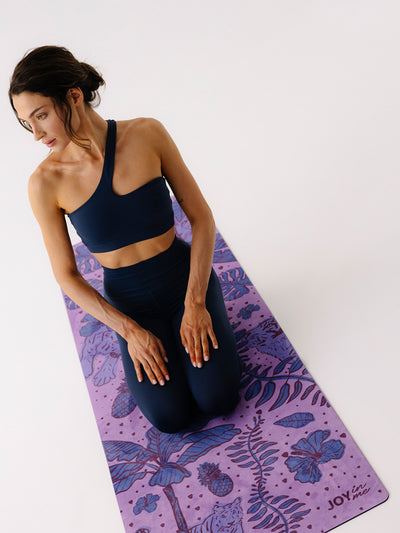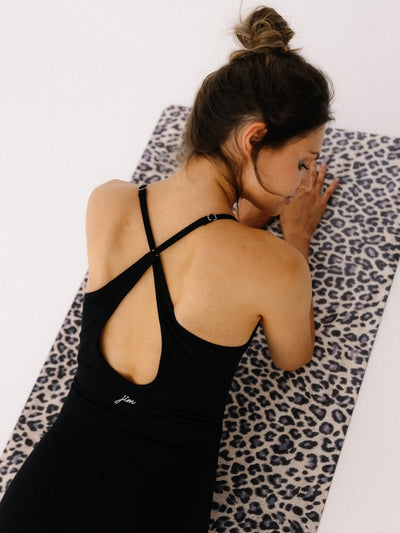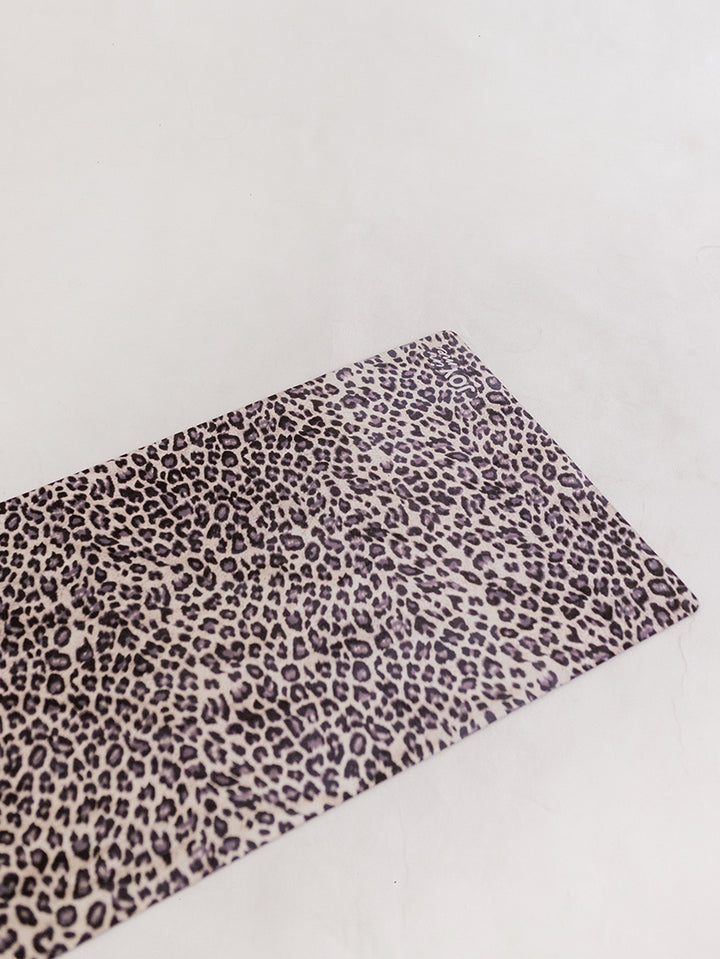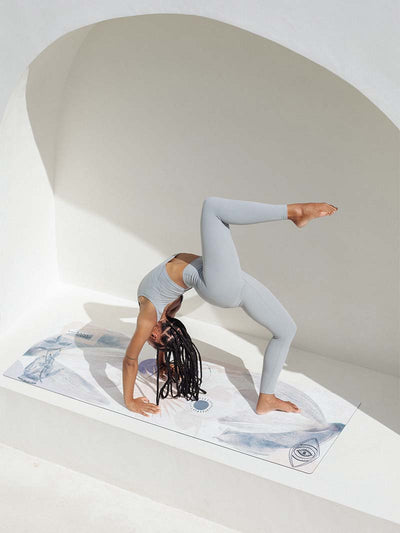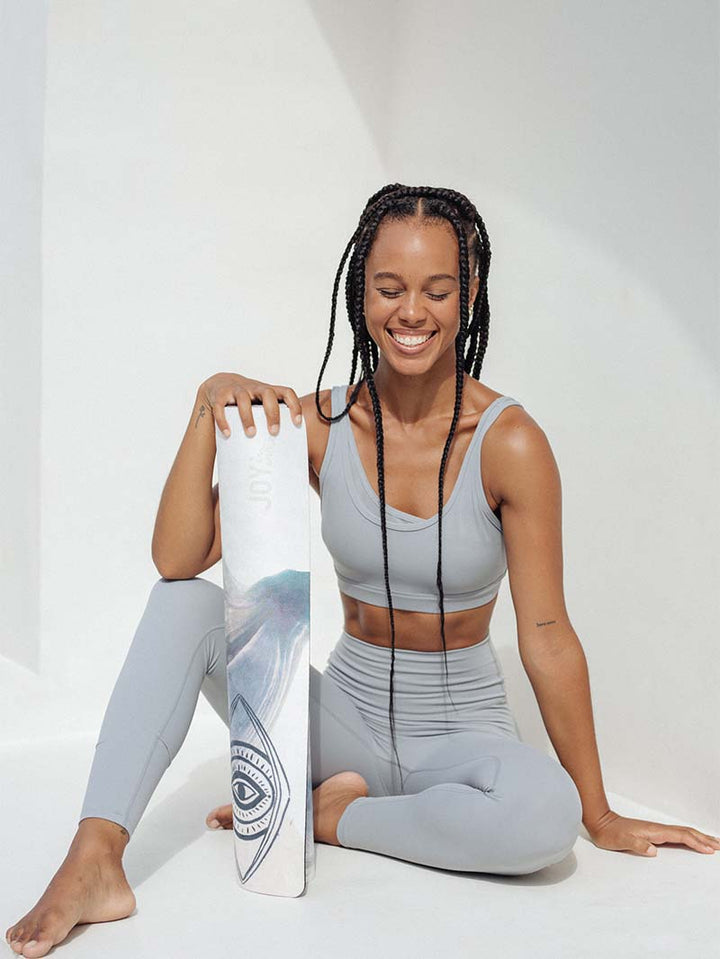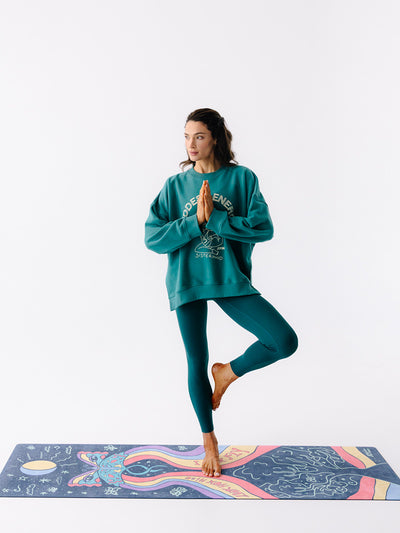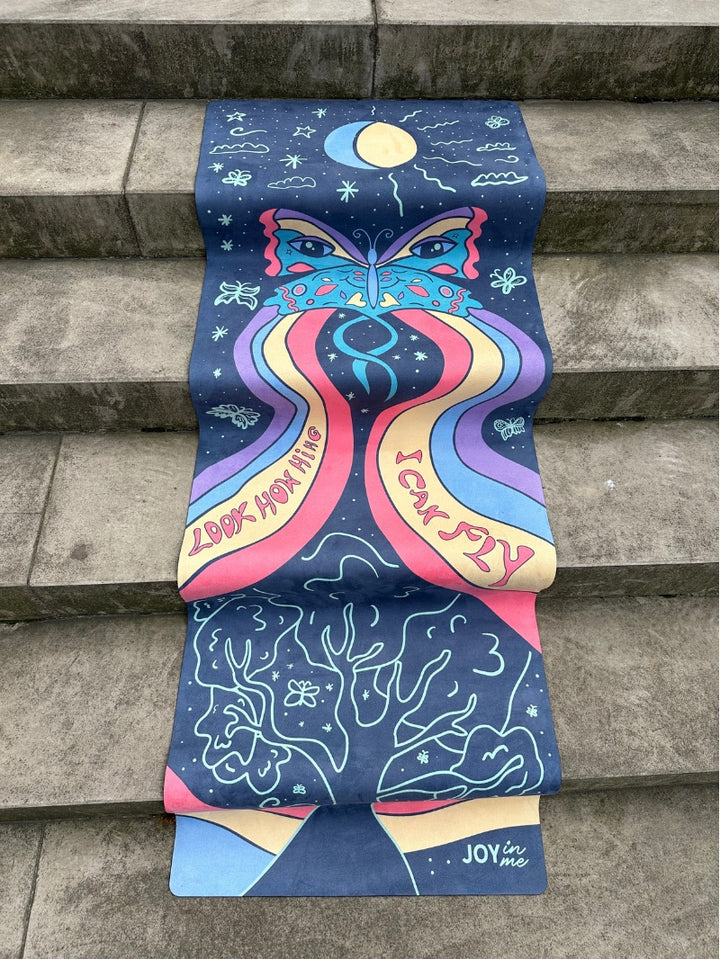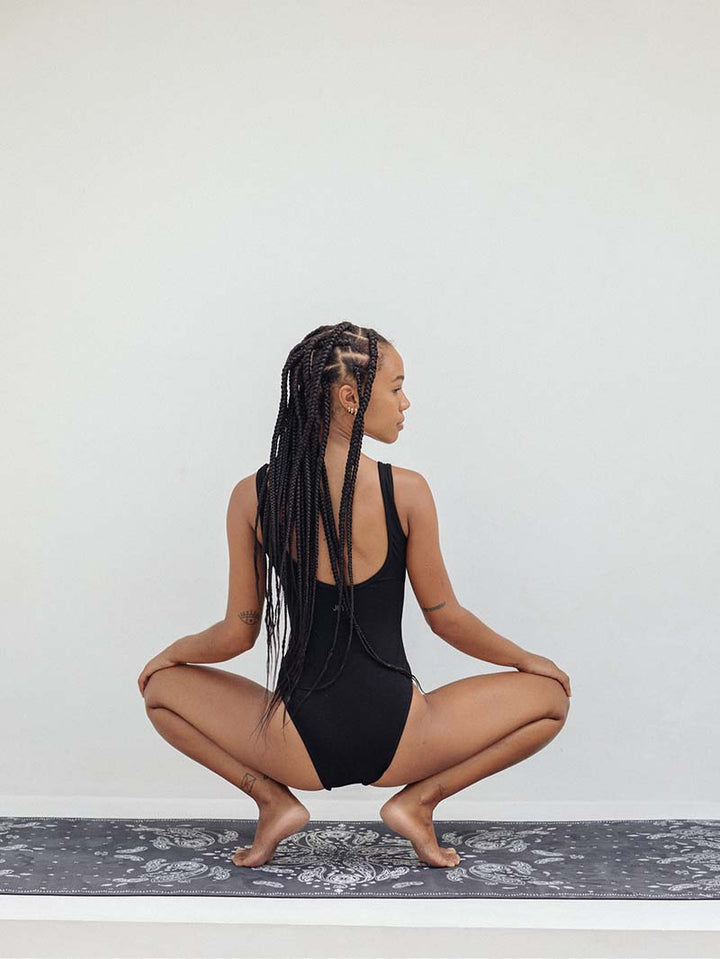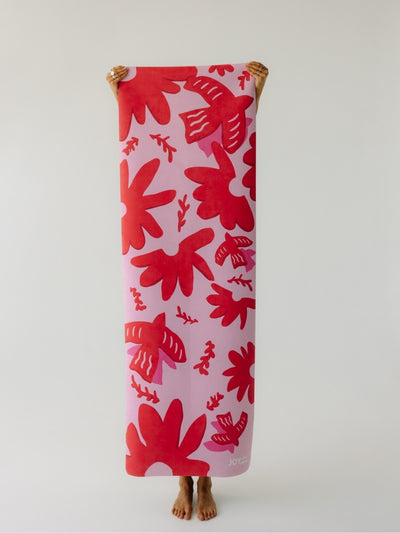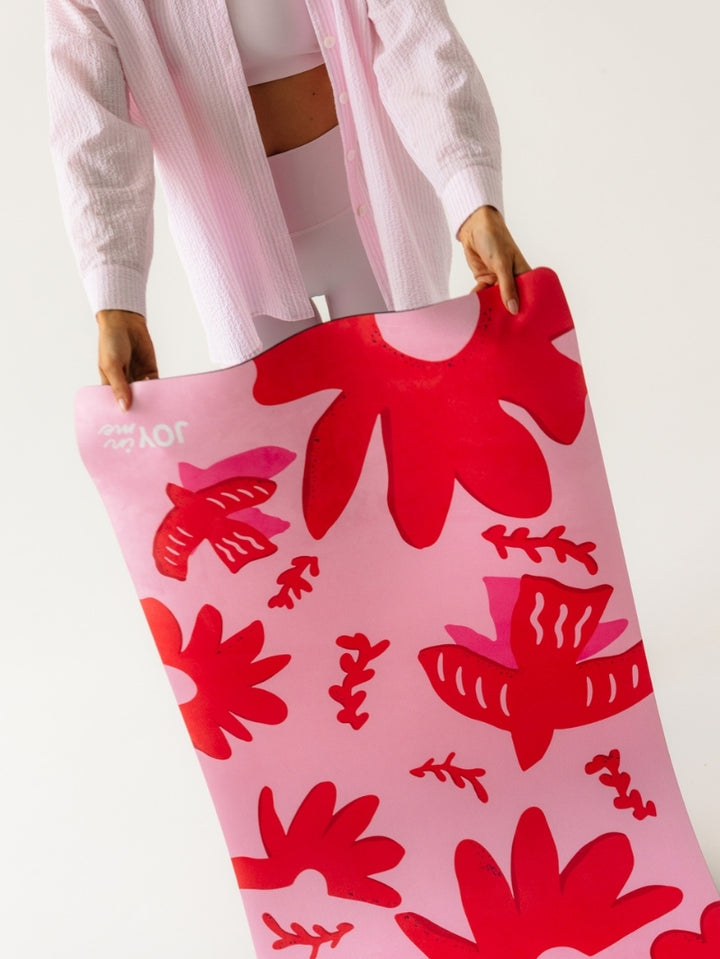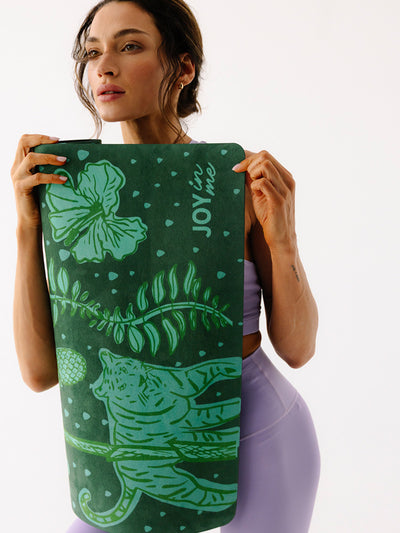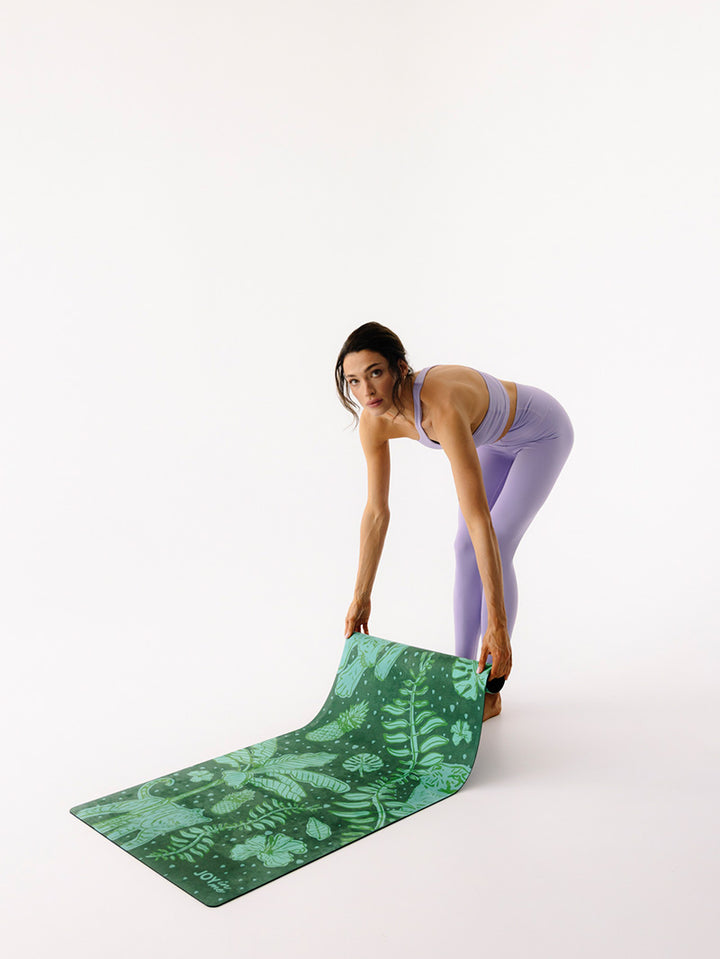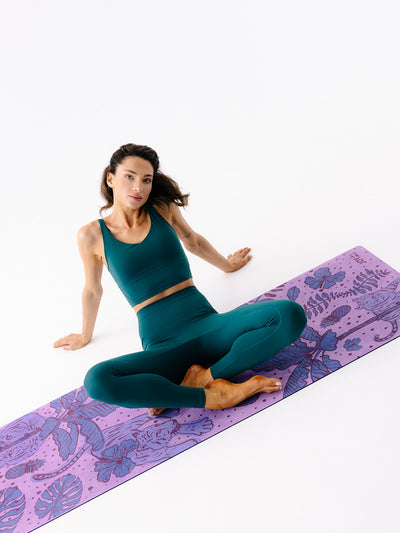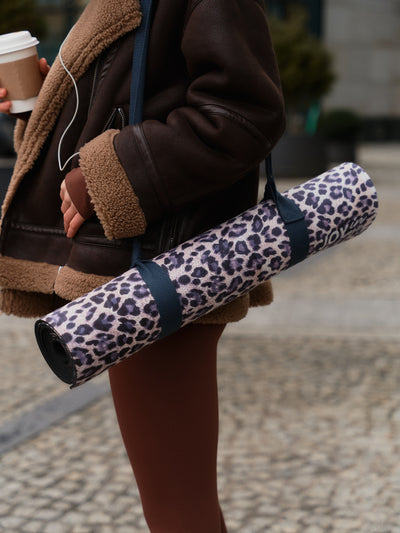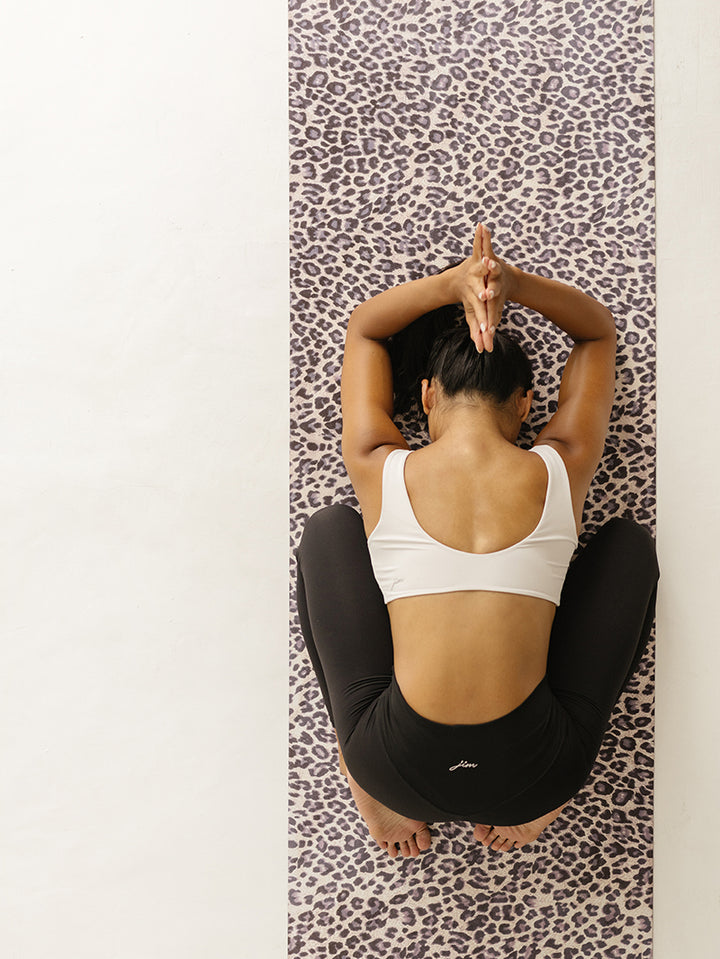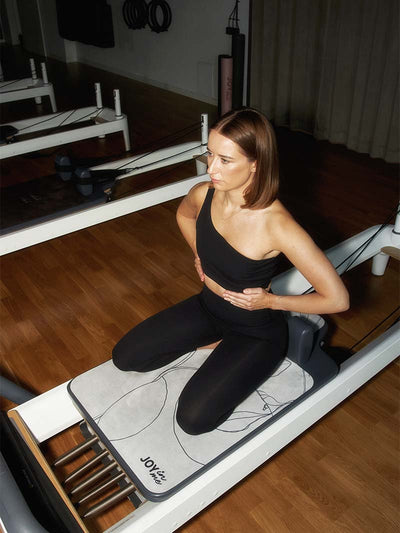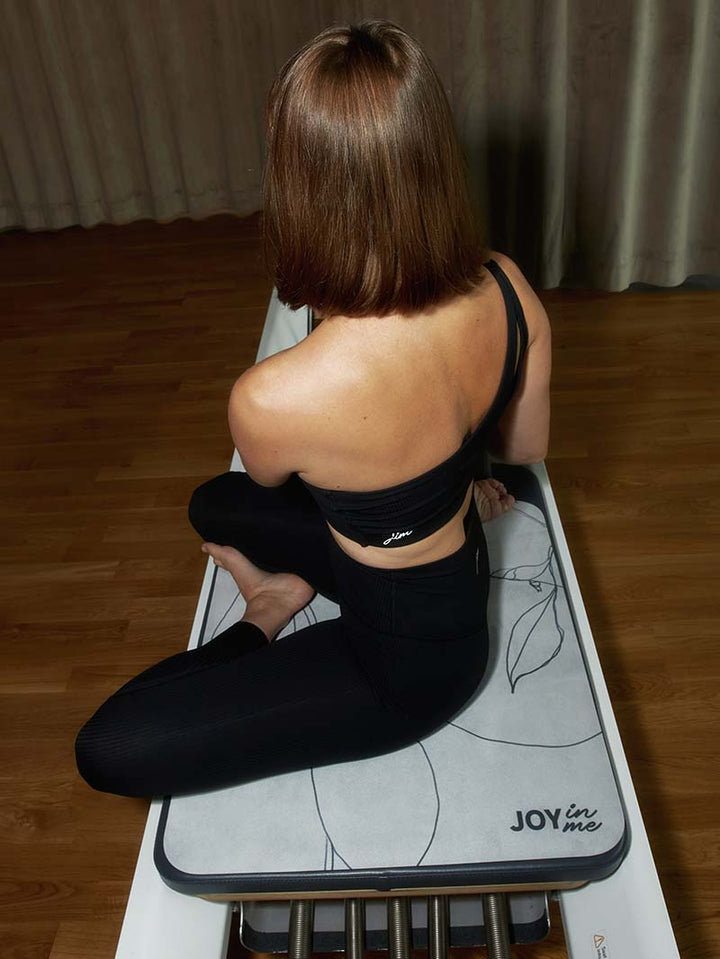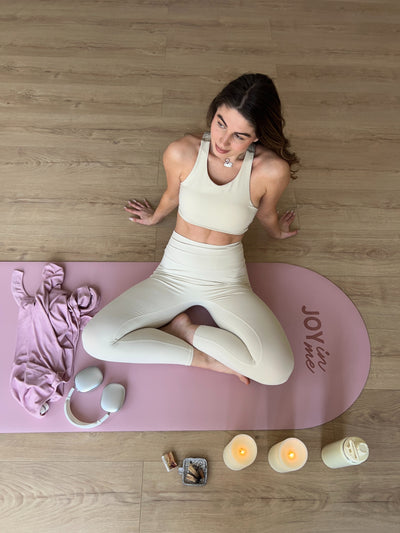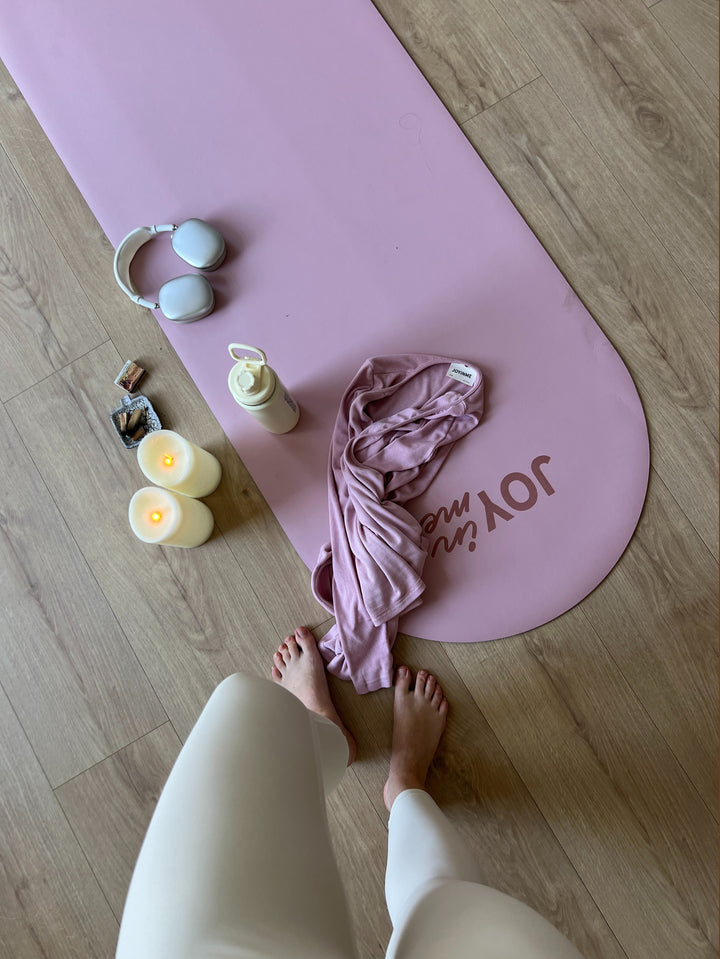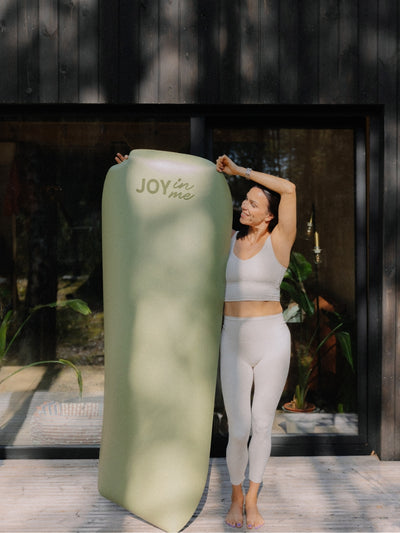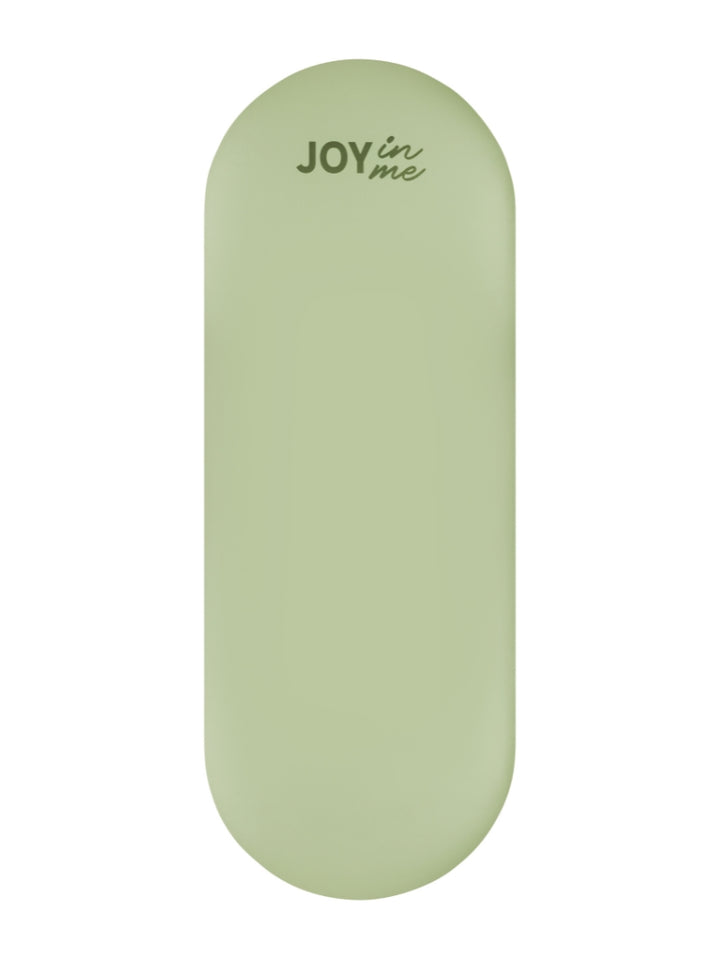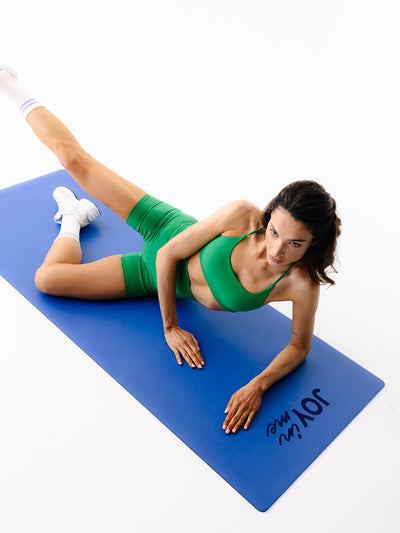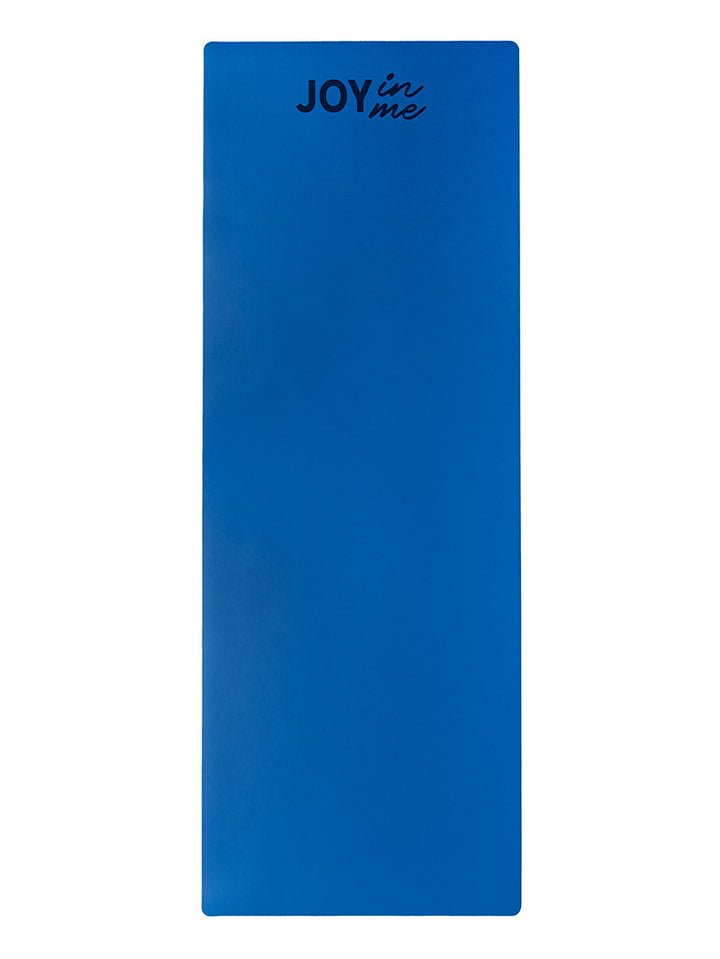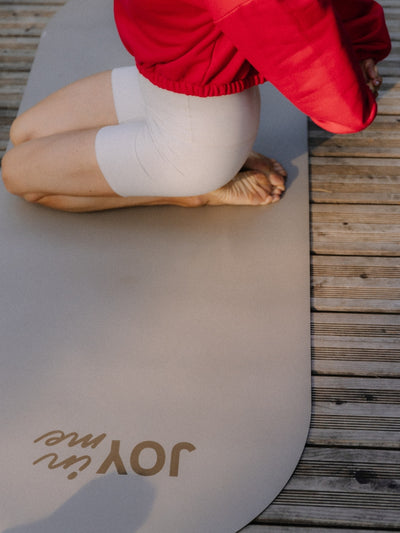Which yoga mat should you choose?
You unfold it and know that this moment is just for you. Your personal space for breathing, movement, and peace. But before that moment arrives, a decision awaits you: Which yoga mat should you choose to make it your best support?
At JOYINME, we understand this dilemma perfectly. As A Polish brand that creates sports accessories for women like you. We believe that a mat is more than just equipment. It's a combination technology that ensures your safety and grip, with a unique design that nourishes the senses and motivates regular practice. That's why we design our patterns to please the eye and inspire you to step onto the mat.
We'll guide you step by step through the most important criteria. We'll answer questions you're probably already wondering: what's the optimal mat thickness? What are the differences between the different types of mats? And finally— how to choose a yoga mat that is well suited to your practice style and... to you.

Mat dimensions – how to choose the right size for you?
The most popular and classic mat size is 180x60 cm. However, a universal product doesn't always meet all our needs . Here are some tips to help you choose the right yoga mat for your body and your specific practice.
Length and width – how to match them?
It's generally accepted that the mat should be at least 10 cm longer than your height, but the most important thing is to fit on it during Savasana . If you have only 5 cm of extra space, that's acceptable . In reality, mat size is a very individual matter and depends directly on your needs.
For group classes, it's worth choosing slightly wider models than standard mats, as they often require limited space for exercise. Also, remember the practical aspects of storing and transporting the mat . Overly wide mats, such as 80-inch mats, are quite unwieldy and significantly limit your choice of mat cover.
Mat thickness – an important balance between cushioning and stability
The thickness of a yoga mat is one of the most important criteria because it directly impacts the quality of your practice. There are many variants available on the market, ranging from 1 mm to 8 mm. As a general rule, the thicker the mat, the better the cushioning for your joints.
Is a thick mat always the best and most practical solution? Not necessarily! Here's some basic information on the most popular options:
- thin mats (1-3 mm) – extremely flexible, guarantee anti-slip properties, provide a sense of stability and can be easily transported to classes;
- medium mats (4-5 mm) – softer than thin models, better cushioning and solid isolation from the ground, which makes them perfect for intensive practice and dynamic types of yoga;
- thick mats (more than 6 mm) – good for people who need more support for their joints, although heavy, it is worth considering, for example, in case of knee problems.
If you travel a lot or take part in workshops abroad, choose a travel mat which, despite its standard dimensions, is only 1 mm thick, which allows it to be folded into a square.

Types of materials – why is it worth choosing natural ones?
The primary choice you'll face is material. This is where you'll likely encounter difficulties, as there are so many options available on the market. PVC, PU (polyurethane), natural cork, TPE, microfiber, natural rubber, and jute—each of these materials has its own unique characteristics and positive properties.
What should you look for to ensure a durable and non-slip product? Find out which material is best!
Natural vs. synthetic mats – comparison of properties
Choosing the perfect yoga mat also requires careful consideration of the material used. Both natural and synthetic models are readily available on the market. They vary in properties, durability, and price . The most popular materials include:
- rubber – durable, ecological, waterproof and easy to care for, provides excellent stabilization;
- jute – a natural, slightly rough material, usually used in combination with other materials, both rubber and PVC foam;
- cork – light, comfortable for beginners and more advanced practitioners, often combined with rubber for additional grip;
- PVC – stable and shock-absorbing, but due to its hardness it requires kneading, you should pay attention to whether this type of mat has an appropriate safety certificate, guaranteeing that it does not contain any harmful substances.
Natural materials don't retain bacteria or dust, making them suitable for allergy sufferers. A yoga mat made of natural, 100% biodegradable rubber, free of lead, cadmium, latex, and silicone, is certainly worth mentioning. The top layer is coated with microfiber, making the product exceptionally soft to the touch and excellent at absorbing moisture and sweat.
Grip and surface texture – how do they affect exercise?
It's important to choose a mat that suits your individual preferences and intended use—after all, your safety also depends on it. Good grip ensures stability during asanas . This is a crucial aspect, especially in dynamic yoga styles that emphasize balance and precision.
The texture of a mat, whether synthetic or natural, influences comfort. For example, jute models offer a rough surface that aids in maintaining a stance, while PVC ones are typically softer and can provide a better feel for the surface.
For those exercising at home, where conditions may vary, a versatile mat with a moderate texture may be the best choice , offering a compromise between grip and personal comfort.

Choosing a yoga mat and the type of exercise – which one to choose?
Choosing the right mat depends primarily on the type of physical activity you engage in . Each type of yoga has its own specific requirements for stability, grip, and comfort, just like Pilates or fitness.
Yoga – from classic to hot yoga
When practicing classical yoga, such as hatha or vinyasa , it's a good idea to choose mats with a moderate texture that will provide adequate grip while still being gentle on the skin. Rubber mats with a smooth surface can be ideal for static asanas that require prolonged holding.
However, if you practice more dynamic styles, such as Ashtanga or power yoga , you might want to consider mats with a rough surface . Models enriched with jute fibers provide better stability during quick changes in poses.
Mats with an additional absorbent layer that prevents slipping on a sweaty surface are ideal for hot yoga.
Pilates and reformer exercises – precision and support
Pilates and reformer exercises require mats with slightly different specifications than traditional yoga. A mat that's too soft can hinder precise exercise execution, while one that's too hard won't provide adequate joint support. It's worth choosing dedicated mats, such as mats designed specifically for the reformer , which are universal in size and fit most machines.
Fitness and intense training – durability and cushioning
For intense workouts, regardless of the type, you need solid support and cushioning. Mats at least 6 mm thick are ideal. They will protect your joints from excessive strain during dynamic movements.
How to choose a mat that suits your level?
What yoga mat is best for beginners? At the beginning of your journey, the most important thing is to build a solid foundation and a sense of security . You want to focus on learning proper technique and breathing, not on struggling to maintain balance on a slippery or too thin surface.
That's why starting out with mats that offer good cushioning are often recommended, protecting your knees and wrists as they get used to new positions. The optimal choice will be a mat with Approximately 3-5 mm thick , it provides a balance between comfort and the stable contact with the ground that's essential for maintaining balance. Our rubber yoga mats perfectly meet these needs, providing firm, stable support.

What if you practice more, more intensely, or while traveling?
As your practice develops, new needs may arise.
-
When you travel frequently: If your mat regularly travels with you to the studio, workshops or holidays, Its weight becomes a significant factor . Consider a lighter model, preferably under 2.5 kg. Our microfiber mats are a perfect example – combining lightness with beautiful design, they are the perfect travel companion.
-
When your practice is comprehensive: Do you practice dynamic yoga, but also enjoy Pilates or functional training? You need a mat that will perform in all conditions. At JOYINME, we prioritize versatility and durability . Our professional rubber mats are designed to withstand years of intense practice, providing joint protection and consistent grip regardless of the type of exercise.
Remember that a mat is not just equipment – it is an investment in your comfort, safety and the joy of practicing. The best yoga mat is one that supports you here and now , but is also ready for your future development. Trust our experience and choose a mat from a brand that knows what it's doing :)
Photographer Photopeople / Model Kasia Tochman-Filip
